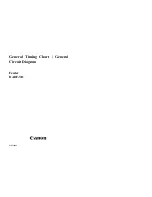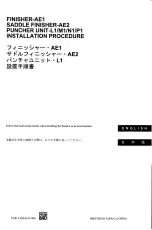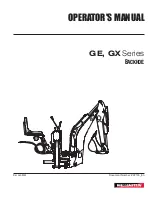
Refrigeration Service Procedures
135
2. Start the unit while watching the discharge
pressure.
•
If the unit stops before the discharge
pressure rises at all, it is more likely to be
a plugged discharge strainer.
•
If the discharge pressure rises before the
the unit stops, it is more likely to be a
faulty HPCO.
Because the refrigerant charge must be recovered
to replace the discharge strainer or the HPCO, it is
best to replace both the discharge strainer and the
HPCO if you are not sure which is causing the
problem.
NOTE: If the discharge strainer is plugged, it is
important to determine and repair the cause of
the debris.
Discharge Strainer
Replacement
Removal
1. Recover the refrigerant charge.
2. Remove the discharge strainer mounting
clamp.
3. Unsolder the refrigeration lines from the
discharge strainer and remove the discharge
strainer from the unit.
Installation
1. Clean the tubes for soldering.
2. Place the discharge strainer in position.
3. Solder the inlet and outlet connections.
4. Install the discharge strainer mounting clamp.
5. Pressurize the refrigeration system and test for
leaks.
6. If no leaks are found, replace the liquid line
drier then evacuate the system.
7. Recharge the unit with proper refrigerant and
check the compressor oil.
Evaporator Coil Replacement
(URDE Only)
Removal
1. Pump down the low side and equalize the
pressure to slightly positive. Make sure to
front seat the suction service valve to isolate
the low side and use the suction access port to
access the low side.
2. Remove the rear evaporator panel.
3. Unsolder the expansion valve from the
distributor.
4. Unsolder the suction line and hot gas line
from the evaporator coil.
5. Disconnect the sensors.
6. Remove the mounting bolts and slide the coil
back out of the evaporator housing.
Installation
1. Place the evaporator coil in the housing.
2. Install and tighten the mounting bolts.
3. Clean the tubes for soldering.
4. Solder the suction line and hot gas line
connections to the evaporator coil.
5. Solder the distributor to the expansion valve
assembly.
6. Connect the sensors.
7. Pressurize the low side and test for leaks. If
not leaks are found, evacuate the low side.
8. Open the refrigeration valves and place the
unit in operation. Check the refrigerant charge
and add as required.
Expansion Valve Replacement
Removal
1. Pump down the low side and equalize the
pressure to slightly positive. Make sure to
front seat the suction service valve to isolate
the low side and use the suction access port to
access the low side.
Summary of Contents for UT-1200
Page 10: ...Table of Contents 10...
Page 20: ...Safety Precautions 20...
Page 76: ...Operating Instructions for Premium HMI Control Panel 76...
Page 88: ...Electrical Maintenance 88...
Page 98: ...Engine Maintenance 98 Figure 167 Fuel Components...
Page 142: ...Refrigeration Service Procedures 142...
Page 148: ...Clutch Maintenance 148...
Page 150: ...Structural Maintenance 150...
Page 162: ...Wiring and Schematic Diagrams Index 162...
Page 163: ...163 Schematic Diagram Page 1 of 2...
Page 164: ...164 Schematic Diagram Page 2 of 2...
Page 165: ...165 Wiring Diagram Page 1 of 5...
Page 166: ...166 Wiring Diagram Page 2 of 5...
Page 167: ...167 Wiring Diagram Page 3 of 5...
Page 168: ...168 Wiring Diagram Page 4 of 5...
Page 169: ...169 Wiring Diagram Page 5 of 5...
















































